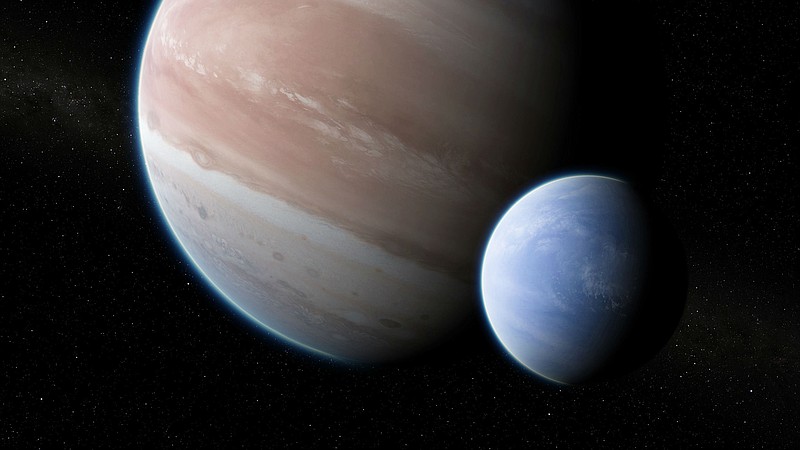CAPE CANAVERAL, Fla. (AP) - Astronomers may have found the first moon outside our solar system, a gas behemoth the size of Neptune.
Plenty of planets exist beyond our solar system, but a moon around one of those worlds has yet to be confirmed. Two Columbia University researchers presented their tantalizing evidence for a moon Wednesday.
The potential moon would be considerably larger than Earth - about the size of Neptune or Uranus. The planet it orbits is as big as mammoth Jupiter. This apparent super-size pairing of a gaseous moon and planet is 8,000 light-years away.
Researchers Alex Teachey and David Kipping evaluated 284 planets outside our solar system that had already been discovered by NASA's Kepler Space Telescope. Only one planet held promise for hosting a moon, one around the star known as Kepler-1625, which is about the size of our sun but older.
So last October, the pair directed the Hubble Space Telescope at the star in an attempt to verify - or rule out - the possibility of a moon orbiting the planet Kepler-1625b. They were on the lookout for a second temporary dimming of starlight. The main dip in stellar brightness would be the planet itself crossing in front of its star. Another dip could well be a moon - known as an exomoon outside our solar system.
The more powerful and precise Hubble telescope detected a second and smaller decrease in starlight 3 hours after the planet passed in front of the star - "like a dog following its owner on a leash," as Kipping put it. The observation period, however, ended before the moon could complete its transit. That's why the astronomers need another look with Hubble, hopefully next spring.
Despite the evidence, Teachey stressed "we are urging caution here."
"The first exomoon is obviously an extraordinary claim and it requires extraordinary evidence," Teachey said. "Furthermore, the size we've calculated for this moon, about the size of Neptune, has hardly been anticipated and so that, too, is reason to be careful here."
He added: "We're not cracking open Champagne bottles just yet on this one."

